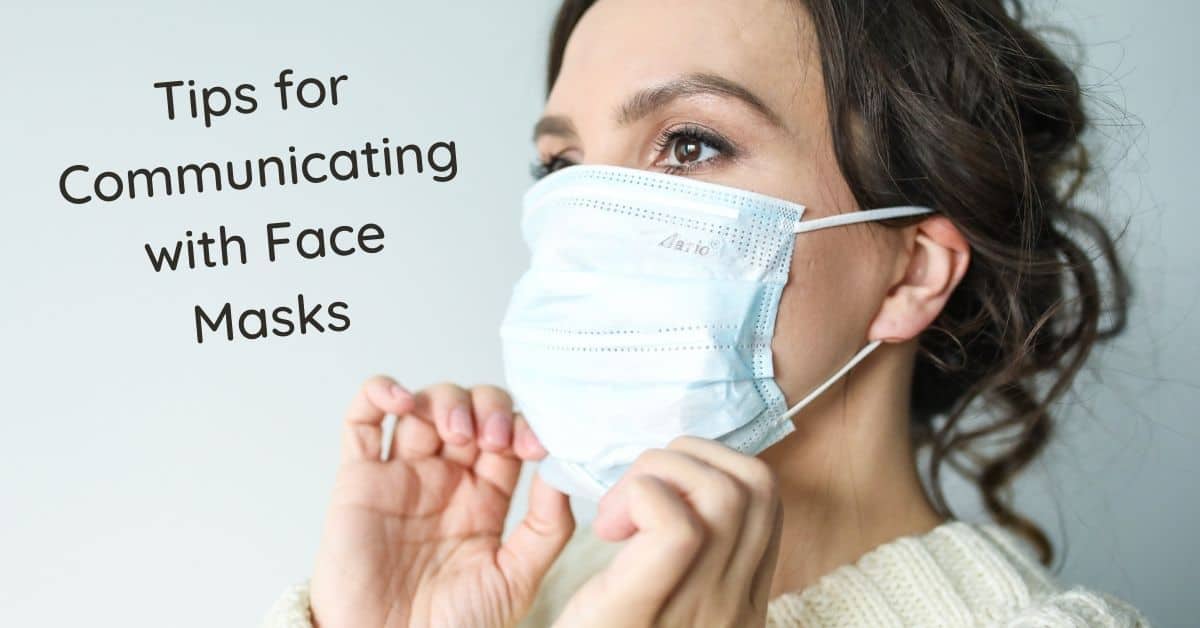
- Tips for Veterans Dealing With Hearing Loss - April 25, 2024
- How to Properly Clean Your Hearing Aids - April 15, 2024
- How to Handle Ear Infections With Hearing Aids - April 5, 2024
These are different times, with hurdles we have never met before. Who would have thought that it would be commonplace to wear a mask in public? While this and maintaining 6-foot distance to maintain social distance practices have become part of many everyday routines there are added challenges for people with hearing issues.
Challenges of Communicating with Masks:
- Obscured voice: Wearing masks can make people’s voices sound muffled. Mask can create a communication barrier, making conversation more challenging for people with hearing disabilities. There are particular challenges for hearing when people have lower or higher pitches that are harder to hear due to a person’s particular type of hearing loss.
- Loss of visual cues: Many people rely on facial expression and lip reading in order to compensate for what is lost in auditory information. When people’s faces are covered they can miss important visual aids in communication.
- Trouble with hearing devices: If you do wear hearing aids or cochlear implants the mask straps can interfere with your devices. It is important to find solutions so you can continue to hear without risking you or others to a higher risk of infection from Covid-19.
Tips For Successful Communication With Face Masks
It is important to remember that everyone hears slightly different so different tips may work for you while others don’t seem helpful.
- Prepare in advance to keep interactions brief and to the point. In the time of Covid-19 the shorter we keep our interactions the less the chance of contracting or spreading the disease. Prepare before you engage in an interaction. Often many details can be handled online or over the phone in advance.
- Be prepared to advocate for your communication needs. There is no shame in letting people know you have a communication barrier. Bring a pen and paper with you so you can write out the information you need to communicate.
- Remember and exercise communication strategies. When you disclose to someone that you have a hearing loss, ask them to speak slowly, enunciate and speak slightly louder than normal so you have more time to process information. Adjust your hearing aid ahead of time depending on the noise of the space in which you are communicating within. Maintain eye contact, as this can continue to give you non-verbal cues, even when the mouth is obscured.
- Technology for enhancing conversation: There are many apps and computer programs, which can transcribe conversation into text in real time. This type of portable technology is a huge asset in communication with masks. Google-Live Transcribe is available on Android Smartphones to help you communicate on the spot. You may want to invest in a Smartphone compatible microphone, which can help pick up conversation more clearly in a crowded or noisy space. You may want to consider using an assistive listen device that can extend the potential hearing distance of your hearing aids such as a Phonak Roger Pen or a portable FM device.
- Wearing Face Masks with Hearing Device: When wearing a mask it can interfere with many models of hearing aids and cochlear devices. Be sure to take your mask off and on carefully as to avoid damaging your hearing device. Always take your mask off in a secure location like your car or home to make sure there are no complications. Using an eyeglass strap, wig tape or clip can help better secure your listening device. Choosing a mask that has four strings rather than ear loops generally is more compatible with most hearing devices.
Hearing Challenges with Physical Distancing
To prevent infection from Covid-19, the CDC recommends keeping at least 6 feet of distance from others. This can prevent many challenges for people with hearing loss. It can be harder to hear people speaking and more difficult to filter out background noise. To deal with these hurdles, make sure to maintain eye contact when speaking to others. Ask people to speak up and slow down while speaking to make sure you have a chance to hear.
We Will Get Through This Together!
This is a very difficult time for everyone. If you are having trouble communicating during this pandemic contact us. We can help you find the best solutions to communicate clearly while still staying safe and healthy through this unprecedented time.
